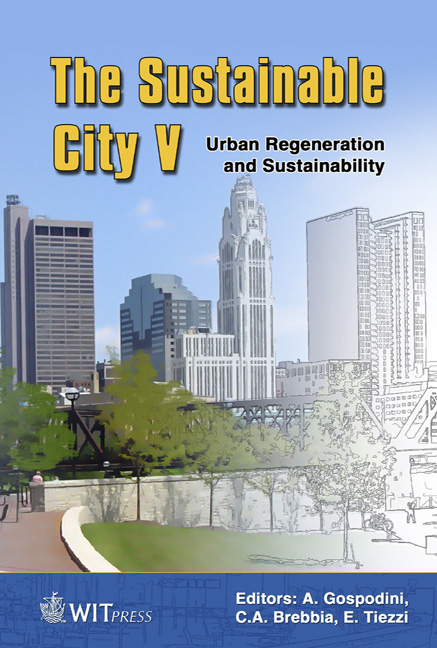Culture And Leisure Cluster In The Post-industrial City: The Case Of Metaxourghio In Athens
Price
Free (open access)
Transaction
Volume
117
Pages
11
Page Range
235 - 245
Published
2008
Size
314 kb
Paper DOI
10.2495/SC080231
Copyright
WIT Press
Author(s)
V. Mavratzas
Abstract
During the last years globalisation has greatly changed the financial features and structure of post-modern cities. Urban space is subject to continuous transformations; superstructures, whose aims are to increase the competitiveness of the place and the reorganization and diffusion to a large extent, tend to make the former "compact city" disappear. The landscape of a post-industrial city is dominated by distinguishable symbolic centres (clusters) that are categorized as culture and leisure clusters, but also as enterprise clusters. They occupy central territorial units of urban space, altering the character of degraded and historical regions. The present paper looks into the case of Metaxourghio, a historical quarter in the centre of Athens, which is currently developing into a cluster of culture and popular leisure. Key words: Metaxourghio, new urban landscapes, new urban economies, postindustrial city, cultural cluster, cluster of popular leisure. 1 Introduction The post-industrial city [1, 2] has two main characteristics: 1. the mixture of the way that land is used (residences, trade, services, recreation) and 2. a hierarchical multi-centric structure. It is indeed a fact that modern cities do not only have one city centre but two or more, where many different activities take place. From the 1990s and on, along with the development of the new urban economies of the post-industrial city [3], the progressive transformation of the prevailing structure model of the way that ground is used has began in the direction of the creation of ‘selective territorial concentrations’ (clustering) of
Keywords
Metaxourghio, new urban landscapes, new urban economies, postindustrialcity, cultural cluster, cluster of popular leisure.





